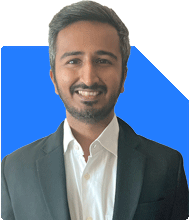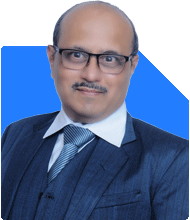Ramalingam Kalirajan |10870 Answers |Ask -Follow
Mutual Funds, Financial Planning Expert - Answered on May 09, 2025
He has an MBA in finance from the University of Madras and is a certified financial planner.
He is the director and chief financial planner at Holistic Investment, a Chennai-based firm that offers financial planning and wealth management advice.... more

Sir, what are the alternative investments, ( without buying or constructing a house) for a minimum period of 3 to 5 years?. Sir i am 71 years old, with heart and arthritis ailments. So I cannot put in any more physical efforts to buy/construct any house. Pl.guide me. Sir,if you consider and reply in a shortwhile will beof much helpful. Thank you.
1. Government-Backed Schemes
Senior Citizens Savings Scheme (SCSS)
This scheme is designed only for senior citizens above 60 years.
It offers assured interest with quarterly payouts.
The investment duration is 5 years. It can be extended by 3 years.
The maximum amount you can invest is Rs. 30 lakhs.
It gives tax deduction under Section 80C.
Premature exit is allowed but with a small penalty.
The returns are safe as this is a government-backed scheme.
This scheme is highly suited for your need of steady income.
Post Office Monthly Income Scheme (POMIS)
This is another safe option for generating regular income.
Interest is paid monthly and the rate is fixed by the government.
You can invest up to Rs. 9 lakhs in a single account.
Joint account can hold up to Rs. 15 lakhs.
Tenure is fixed at 5 years.
It offers capital protection with low risk.
You get fixed income but there is no tax benefit.
It is easy to open and operate at your nearby post office.
2. Bank Fixed Deposits (FDs) for Senior Citizens
These deposits are safe and easy to understand.
Senior citizens get extra interest than general public.
You can choose tenure between 1 year and 5 years.
Interest can be paid monthly, quarterly, or on maturity.
Most banks offer special FD schemes for senior citizens.
Your capital is insured up to Rs. 5 lakhs per bank.
Breakable FDs offer flexibility if funds are needed early.
Laddering FDs helps manage cash flow better over time.
3. Debt Mutual Funds
These funds invest in safe instruments like bonds and securities.
They are managed by expert fund managers.
You get better returns than savings accounts or FDs.
Ideal if you want moderate returns with low risk.
Can be held for 3 to 5 years for better stability.
You can withdraw partially or fully at any time.
Taxation depends on your income slab.
For short-term and long-term, gains are taxed as per slab.
Choose funds through a Mutual Fund Distributor who is a Certified Financial Planner.
Avoid direct mutual funds. Regular plans through a trusted CFP give guidance.
Regular plans also help with tracking and rebalancing.
These funds suit conservative investors like yourself.
4. Hybrid Mutual Funds
These invest in a mix of equity and debt instruments.
They balance safety and growth better than pure equity funds.
Suitable for moderate risk appetite and medium-term goals.
They offer higher potential returns than debt mutual funds.
You can use Systematic Withdrawal Plan (SWP) for monthly income.
You withdraw a fixed amount every month as income.
Remaining investment continues to grow.
Better than bank interest in most years.
These are managed by experienced fund managers.
You get professional management and risk balancing.
They suit your 3 to 5-year investment horizon well.
5. Tax-Free Bonds
These are issued by government-backed companies.
Interest earned is fully exempt from income tax.
They offer fixed income for long periods.
Tenure is usually 10 to 20 years.
But they can be sold in the secondary market anytime.
There is no TDS on the interest received.
Capital remains protected if held till maturity.
Useful for generating tax-free income.
Liquidity may be limited, so invest part only.
Ideal for people in higher tax slabs.
6. Public Provident Fund (PPF)
PPF is a long-term savings option with tax benefits.
Though the tenure is 15 years, you can withdraw after 5 years.
Partial withdrawals are allowed from sixth year onwards.
Interest earned is tax-free.
Investment up to Rs. 1.5 lakhs per year is allowed.
Investment also gives tax deduction under Section 80C.
Since you are already 71, limit the amount you put here.
Use PPF only if you have surplus funds with long-term view.
7. Health Insurance
Health expenses can disturb your retirement savings.
A proper health policy gives peace of mind.
Make sure your plan covers pre-existing diseases.
Select a plan with low waiting periods.
Top-up plans can help increase your coverage.
Premium paid gives tax benefit under Section 80D.
Renew your health plan before expiry every year.
Do not delay or skip health insurance.
Health is your most important financial asset now.
8. Emergency Fund
Keep a separate fund for emergencies.
It should cover at least 6 months of expenses.
Keep this in savings or liquid mutual fund.
Avoid using this fund for investments.
This fund helps during medical or family needs.
Having this buffer keeps you financially stress-free.
9. Avoid Complex or Risky Investments
Avoid real estate, especially construction or buying property.
At this age, physical and legal efforts must be avoided.
Do not go for products that lock your funds.
Avoid insurance-linked investment plans like ULIPs.
These give poor returns and are not flexible.
Do not invest in shares directly.
Direct equity needs monitoring and risk taking.
Do not use index funds.
Index funds blindly copy the market.
They don’t protect capital in falling markets.
Actively managed funds are better.
Fund managers can exit bad stocks and reduce loss.
Index funds lack human decision-making.
In volatile times, this can be harmful.
10. Taxation Awareness
Interest from SCSS and FDs is taxable as per your slab.
Debt mutual fund gains are taxed as per slab.
Equity fund gains above Rs. 1.25 lakh are taxed at 12.5%.
Short-term equity gains are taxed at 20%.
Keep these in mind while planning redemptions.
Withdraw funds in parts to manage tax better.
Consult a Certified Financial Planner for personalised tax advice.
11. Role of Certified Financial Planner (CFP)
A CFP is qualified and regulated to give financial advice.
They help in goal planning and risk management.
They review your current holdings and guide on changes.
CFPs don’t push products. They suggest based on your goals.
You can invest through them using regular mutual funds.
They handle paperwork, tracking, and rebalancing.
Their fee is included in mutual fund expenses.
They act as a long-term guide in your financial journey.
Especially helpful at your age when decisions must be safe.
Select only CFPs who are registered and experienced.
12. Avoid Annuities
Annuities give very low returns.
They lock your money and lack flexibility.
Payouts are taxable in your hands.
You lose control over your capital.
Not suitable at your life stage.
Safer alternatives with better liquidity are available.
SCSS or Hybrid Funds are more beneficial.
13. Review of Existing Policies
If you hold old LIC or ULIP plans, please review them.
These plans often give low returns.
Check surrender value and consider exiting.
Reinvest the amount into better options.
Use mutual funds for flexibility and higher growth.
Take help of a Certified Financial Planner for this.
Finally
Your investment needs are clear.
You want safety, income, and peace of mind.
You do not want physical involvement or stress.
You want your money to work silently and reliably.
That is exactly what the above options offer.
They protect your capital and generate steady returns.
They are flexible and easily accessible.
They need no physical effort or frequent monitoring.
At your stage, financial peace matters most.
Not chasing high returns, but getting consistent income.
You have taken the right step by seeking advice.
Now, implement these options gradually.
Start with a basic allocation. Review it every year.
Focus on health, simplicity, and financial security.
Let your money bring comfort, not worry.
Wishing you a financially safe and relaxed retirement.
Best Regards,
K. Ramalingam, MBA, CFP,
Chief Financial Planner,
www.holisticinvestment.in
https://www.youtube.com/@HolisticInvestment
You may like to see similar questions and answers below
Ramalingam Kalirajan |10870 Answers |Ask -Follow
Mutual Funds, Financial Planning Expert - Answered on May 18, 2024
Ramalingam Kalirajan |10870 Answers |Ask -Follow
Mutual Funds, Financial Planning Expert - Answered on May 18, 2024
Vivek Lala |323 Answers |Ask -Follow
Tax, MF Expert - Answered on Jun 16, 2024
Ramalingam Kalirajan |10870 Answers |Ask -Follow
Mutual Funds, Financial Planning Expert - Answered on Jul 12, 2024
Nitin Narkhede | Answer |Ask -Follow
MF, PF Expert - Answered on Aug 23, 2025
Dr Dipankar Dutta |1837 Answers |Ask -Follow
Tech Careers and Skill Development Expert - Answered on Dec 05, 2025
Dr Shyam Jamalabad |108 Answers |Ask -Follow
Dentist - Answered on Dec 05, 2025
Dr Shyam Jamalabad |108 Answers |Ask -Follow
Dentist - Answered on Dec 05, 2025
Dr Shyam Jamalabad |108 Answers |Ask -Follow
Dentist - Answered on Dec 05, 2025
Dr Dipankar Dutta |1837 Answers |Ask -Follow
Tech Careers and Skill Development Expert - Answered on Dec 05, 2025
Ulhas Joshi |280 Answers |Ask -Follow
Mutual Fund Expert - Answered on Dec 05, 2025
Dr Dipankar Dutta |1837 Answers |Ask -Follow
Tech Careers and Skill Development Expert - Answered on Dec 04, 2025
Ravi Mittal |676 Answers |Ask -Follow
Dating, Relationships Expert - Answered on Dec 04, 2025
Anu Krishna |1745 Answers |Ask -Follow
Relationships Expert, Mind Coach - Answered on Dec 04, 2025
Anu Krishna |1745 Answers |Ask -Follow
Relationships Expert, Mind Coach - Answered on Dec 04, 2025










.jpg)



















